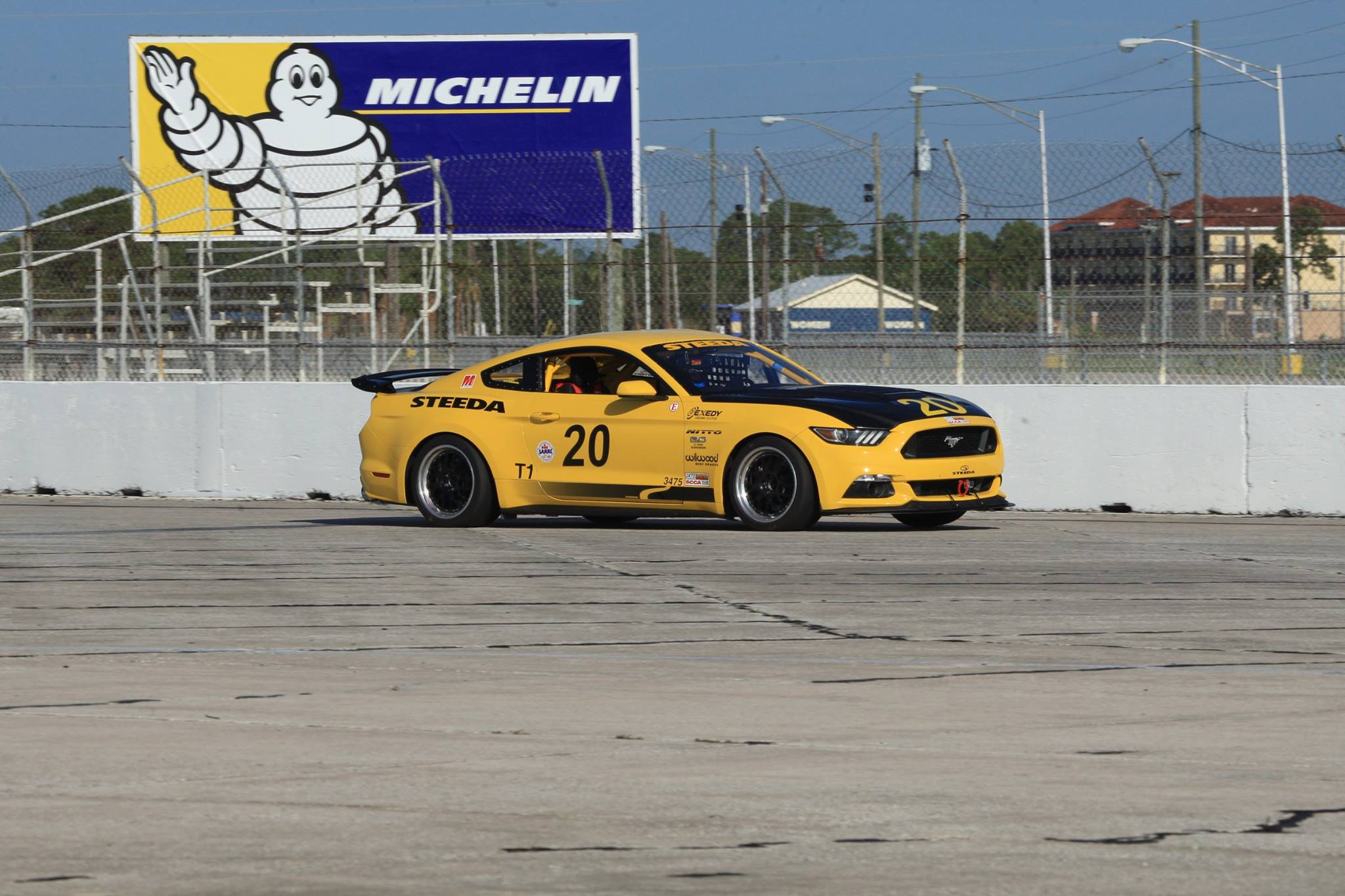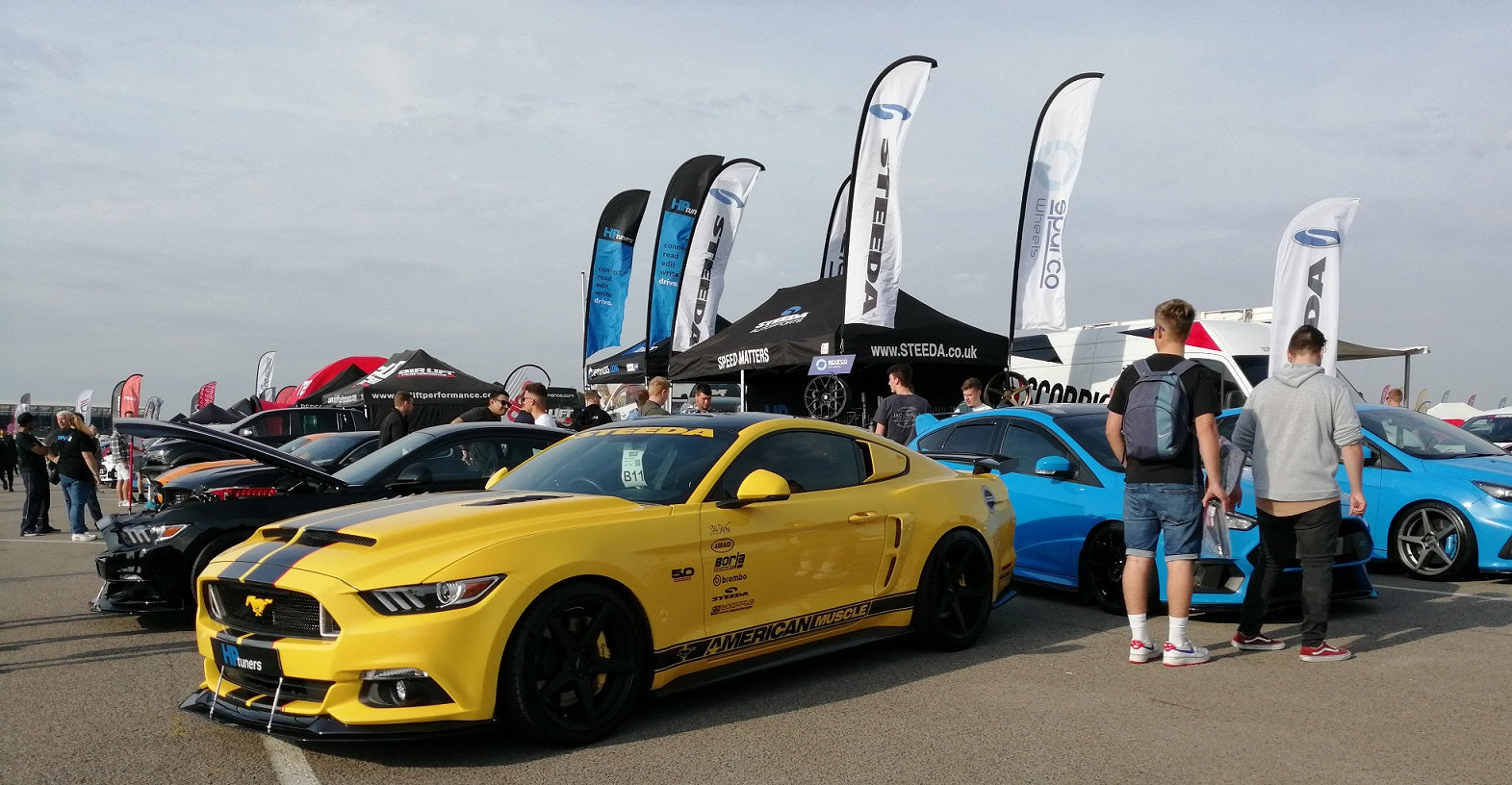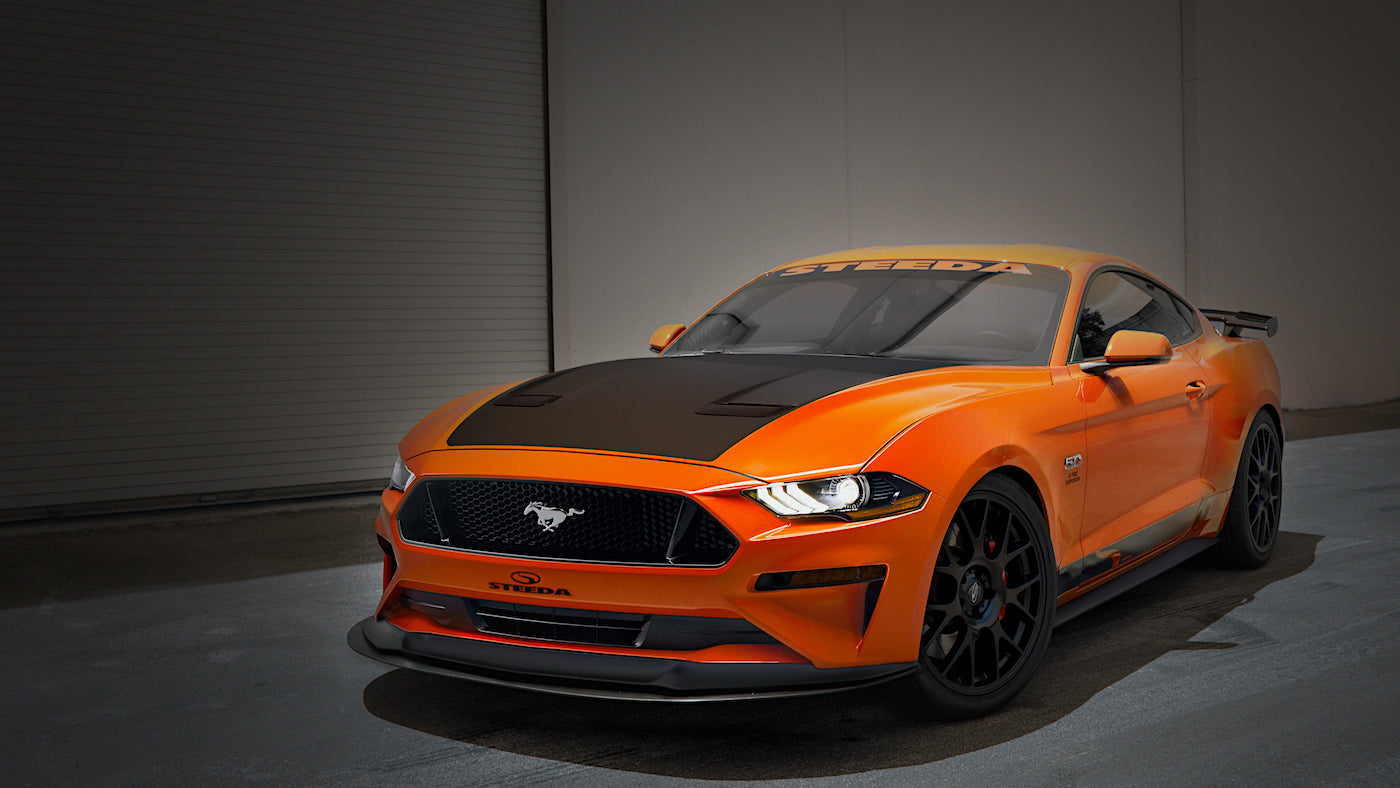
Track Day Tips - The Basics
As we are all owners of Fast Fords that love to live up to the Steeda "Speed Matters" motto, some of us might want to escape the traffic hell of public roads and let our cars off the leash a bit on a track day. These are very accessible now, with tracks all over the UK and Europe offering access on Track days and half day or evening sessions.
However, some people can be a little intimidated or confused by the idea of track days, so here is a small "beginners guide" to help you out. Even if you have done a track day or two, we hope this helps a little too. We are talking about Circuit days here rather than drag strip sessions.
THE MAIN THING TO REMEMBER AT ALL TIMES: TRACK DAYS ARE NOT RACES
They are an opportunity to have fun in your car and take your car (and you as a driver) up to the limits and speeds it is capable of in a safe and legal environment.
Once you have done a few track days and have some experience, you might want to actually race, and there are plenty of ways to start doing this but that's a topic for another blog post!
You can have a fully modified track car Or a stock / almost stock road car.


There are a couple of different kinds of track days:
1. What I will call "activity days or airfield days" like Steeda's Driving Experience Days which take place on an airfield or circuit or car park / open tarmac area, and which are usually run in a "one car at a time" format, and used to improve your driving skills and get to learn the performance and handling of your car and have fun, usually with little to hit other than a few cones etc.
2. Actual race circuit "track days" for example at Brands Hatch or Snetterton (or indeed the Nurburgring). These involve multiple cars on circuit at the same time, and are more hazardous environments as the track can be surrounded by gravel traps, armco barriers and other things to avoid, plus of course other drivers. As such these days always require the driver and passengers to adhere to minimum safety apparel regulations. This usually means normal cloths that cover up the arms and legs (ie no shorts and T shirts) and a helmet of some kind. I prefer an open face helmet for comfort and to allow conversation with passengers / instructors etc IN A CLOSED ROOF car. In a convertible / open top car a full helmet is recommended.
Track Days often come in 2 formats:
1. OPEN PIT LANE. This basically means a free for all! Drive whenever you want, for however long you want, the choice is yours. This gives you the most freedom of choice.
2. "SESSIONED" track days. This means the organisers of the track day split the day into different sessions and allocate cars to each group. This allows them to have "novice sessions" and "experienced sessions" for example. This is a good option if you are a rookie and want to make sure you are with drivers of a similar level. It also means a more controlled and predictable day.
Once you have chosen a day and a circuit to go to, then the fun begins. I would always recommend trying to go along with some friends both to share the experience and allow you to rest and passenger with each other and help each other out if needs be! Steeda UK organised days are good for this or club days and such like. Keep an eye on our Facebook page and Blog for opportunities but there are plenty of reputable track day organisers out there. If you find someone good, try and stick with them, as badly organised days can leave a bad taste in your mouth if they tolerate bad driving or overbook and under control.
The Track Day and our Cars
Now that we have learned that track days are NOT RACES. We must also admit that our cars ARE NOT RACE CARS (even if it is painful to do so!)
People worry about wear and tear on track days, but generally it is very minimal and manageable. Massive wear and tear and indeed damage tends to occur due to overheating. This is your main enemy on a track day. However much you have modified your car, unless you have built it specifically for the track (in which case you dont need to read this!) it will be a road going car. This is NOT a bad thing. Temperature is an essential variable for car components. They are designed to work within operational parameters, and a track / race item tends to have a much higher operating temperature range than road parts. This does NOT make them better. Just different.
For example a race / track focussed brake pad operates at MUCH higher temperatures than road one. This means as you hammer the brakes lap after lap they keep working. BUT when they are cold they dont work at all. This is why race pads are a terrible idea on a road car. They literally won't work at normal minimal braking operating temperatures on the road. Its the same with tyres (which is why F1 drivers frantically weave about before the race starts trying to get heat into the tyres. WITHOUT heat they just don't grip!)
As such, I always say HEAT MANAGEMENT is an essential part of track day best practice.
You can go on an Open Pitlane All Day session, and say do 5 sessions where you:
1. Go out for a warm up lap, and sighting lap
2. Hit 4 "hot laps" as hard as you feel comfortable
3. Coast back around for a cool down lap, with minimal throttle and braking (these can often be nearly as fast as your hot laps as you are driving much more smoothly!!)
4. Come into the pits to let the car cool down.
Have a rest drink some water, go for a ride as a passenger with your friends to see what lines they are taking and where they are braking etc. Especially if they are more experience than you. Then you are ready to go back to step 1
Doing that, you would have done 5 x 6 laps (1 in, 4 "hot" and 1 out / cool down) for a total of 30 laps, and your car will (should) be fine.
BUT if you decided you are Lewis Hamilton and that the track day is the British GP, and your car is race prepped by McLaren, and you decide to hit out 30 laps in 1 session (after all its Open Pit Lane so you can). There is a VERY good chance you will DESTROY your brakes, DESTROY your tyres, and potentially overheat and damage your engine and other parts (eg transmission). Not too mention dead brakes and or tyres could mean a loss of control and a crash or incident, none of which counts as "fun". Even you as the driver can suffer from tiredness and poor decision making. Track days are mentally and sometimes physically draining!
The bigger and heavier your car, and the more powerful, the truer this is, as they will build heat much faster and put more pressure on the cars systems. So a supercharged Mustang, or high HP Focus RS needs to be doubly careful in this regard.
Now of course you can help mitigate the heat issues with modifications, from the very simple and cheap (and highly recommended) Rad Relief heat management additive through to uprated brake systems, such as our slotted discs set and braided brake lines for Mustangs or Fiesta. Grippy track day tires can help improve times and handling and control heat better. Michelin Pilot Sport Cup 2 is our recommendation BUT the best practice is to keep your runs broken down into small stints. However much you have modified your car, your car and YOU will last the day better if you take it easy and break up the track day into stints. You will get a feel for what is the "perfect stint" for you and your car. 3 Hot laps? 6 Hot laps? But keep it short!
Now that is out of the way, we can talk about how to have fun, and what to remember on the day.
Step 1: Car Prep
A track day isn't a normal days driving. You will be full throttle a lot of the time, and hard braking repeatedly. As such step one should occur BEFORE you set out for your track day. Check your car over, and make sure its in good condition. Is the oil topped up, are the brake pads and discs in acceptable state, are your tyres OK and properly inflated. Check your wheel nuts, especially if changing to a set of track wheels. Many tracks will only allow in car camera / phone mounts that they regard as adequately safe, and often suction mounts are not allowed. If you want to film make sure you have a bomb proof mount. After all do you want a camera flying loose and smacking you in the face as you try and corner at 90mph? A Full tank of premium fuel is a good idea too as on track your car will GUZZLE that stuff! MPGs can easily hit single digits.....
NOISE!!!
An important part of car prep is understanding that a lot of UK tracks have strict noise limits, and if your car fails the noise test it wont be allowed on track. Even if you pass the static test in the pits, you can still be "black flagged" and thrown off track if you fail the drive by tests while on the circuit. A lot of tracks will allow you to pop in and sound check your car if you are unsure. This is an essential check, as you could find your self wasting a lot of money and time if you book a trackday and then fail sound check. If you have a loud system you can buy baffles etc to tone things down. We're looking at you mustangs......
-------------------
An open face helmet is fine in a closed car (e,g, Focus or Mustang Coupe).
It helps you keep cool & talk to your passengers/instructor.
Make sure to get an FIA certified helmet that will future proof you if you decide to start competing later on...

Step 2: Driver Prep
This is fairly simple. Make sure you bring your licence, and if required a helmet. You can usually hire one at most tracks if you want too. If you are concerned about your car, Track Day Insurance by companies like REIS can help. Also remember to wear comfortable breathable clothes with long sleeves and full length trousers, plus good comfortable driving shoes. Driving gloves can also be a good investment as they are cheap and can give you a very secure grip on the wheel even with your palms sweating away and your heart pounding!
The real important prep is too relax, and have fun. LISTEN to your track day organisers and marshals. They are there to make sure you stay safe, and have fun.
There is no pressure on you to set lap records, or go full speed on lap one. You have all day. Also remember to eat and drink, especially drink, as it can be hot work!
A real help for driver prep is instruction. Nearly all track days will offer instructor hire on the day, and you can try and pre-book a session. Its a great way to learn the track and get some basic tips. Even track day regulars can really benefit from a pro helping you... (admit it!)

Step 3: Off We Go (not off the track hopefully)
Once you have signed in, and listened carefully to the safety briefing, then you are ready to go.
At the start of the day everyone is desperate to get out there so there can be a lot of traffic.
NEVER try and start the day like a bat out of hell, laying down a marker to all the other drivers that you are king of the road. Take it easy, learn the track, shake down your car, see what other cars are out there, and who is potentially very fast (so you can keep an eye on your mirrors).
Remember ITS NOT A RACE. in the UK Track Days do NOT allow overtaking under braking (i.e into a bend) or at a corner.
ALL overtaking must be done by consent on the straights between corners. If someone is faster than you. and its a good chance many people will be REGARDLESS of their car, when you enter the next straight, pull aside from the racing line, (each track will specify which "side" you must overtake on.. so pay attention in the briefing) and indicate to them that they can pass, with a little lift of the accelerator if required as your car might actually be more powerful and quicker on the straights.
Its a common problem for powerful cars to think they are "dominating" the day, because every time a straight arrives they can plant the throttle and shoot off into the distance. What they often fail to realise is that as they crawl around the bends or brake 200 metres before everyone else, they are creating a convoy of very frustrated drivers behind them! DON'T BE THAT PERSON!
There is no shame in letting drivers go past. Even if your car has 300 hp more than everyone else. ITS NOT A RACE. You find your own pace, and with practice and experience (and instruction) you will get quicker and quicker, and soon you may well be "dominating" the day and lapping everyone in sight. But let that day arrive naturally....
Also remember DRIVE IN SHORT STINTS! If there is a slower driver in front of you or a lot of traffic dont curse and get frustrated, just use it as an opportunity for a cool down / coasting lap, and then go "hot" again when you have a nice gap in front of you. If you have a lot of traffic on the track, then cool down lap, and come into the pits for a drink and go back out in 5 - 10 minutes when hopefully a lot of cars will have pitted. Pick when you leave the pit lane to allow a nice clear bit of track.
KEEP CHECKING your car during the day. Are the tyres OK? Are your brakes OK, is your oil level OK? DO NOT use the handbrake when coming back into the pits as red hot discs plus handbrake does not mix and can damage your brakes. Also check your wheel nuts are tight. Wheels falling off at 100mph are bad.
Do not be afraid to ask for advice from your fellow track goers and organisers.
Remember SpeedMatters! But more important is:
SAFETY
Motorsport is potentially dangerous. No one wants it to be, but driving one ton + machines at high speed is inherently risky.
The organisers of the day and the marshals are there to help lookout for you and keep you safe, but it is YOUR responsibility to look out for yourself and your passengers.
Don't get angry with other drivers. Just let them past or if they are blocking you, pit or slow down to let them get out of your way. If you see a driver behaving poorly, report them to the organiser or marshall, as they want a good day for everyone. Don't try and "teach them a lesson" on track. If on track behaviour is poor and the organisers don't deal with it, dont use that organiser again in the future.
LOOK OUT FOR MARSHALLS. They will wave flags and alert you if things have happened on track. Keep your wits about you. Focus on the track at all times. no playing with cameras / stereos / etc on track.
If you are tired or thirsty pull in to the pits. There can be a HUGE shot of adrenaline initially on track and when this wears off there can be a real wave of exhaustion that sets in. This can really impact you on your drive home or at the end of a long track day, so be careful.
You will have spent the whole day driving really fast, but remember when you LEAVE the track you are back in the real world. Drive safely and at the speed limit. This can seem like slow motion after a day on track, but stay safe! Not to mention speeding fines are a bad end to a great day!
This is in no way a definitive guide. Add your comments if you think we should add anything.
While it might be intimidating at first, track days should be a fun and safe way to enjoy your car. We highly recommend them and invite you to join us on Steeda UK run days. We'd love to meet you!
NEVER RACE ON THE ROAD.
Some pics courtesy of Jason Dodd Photography

